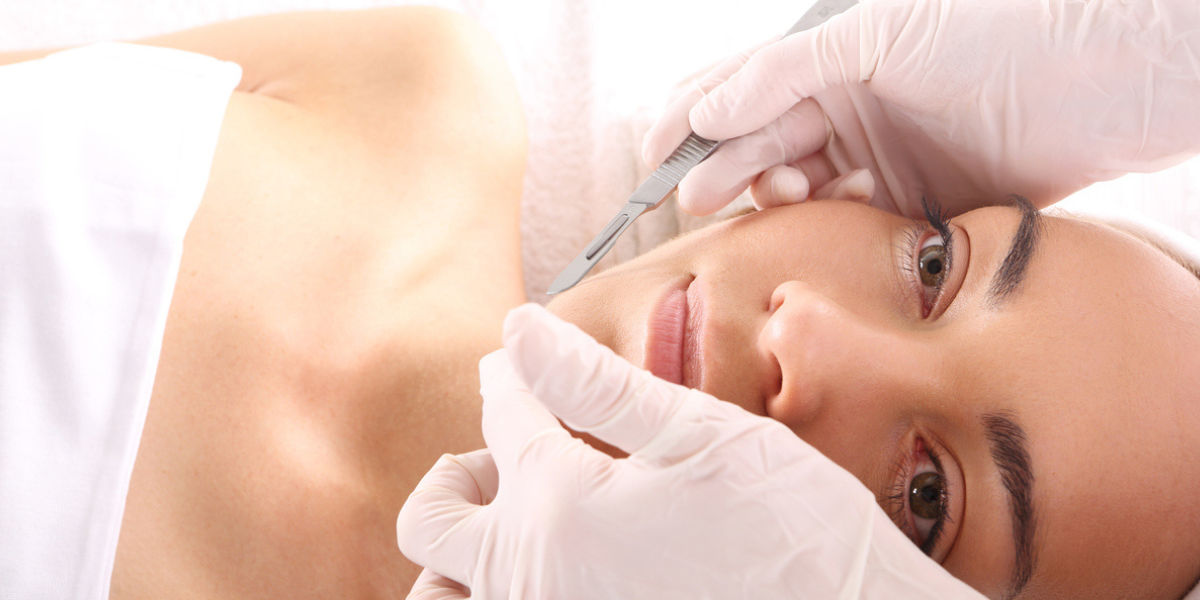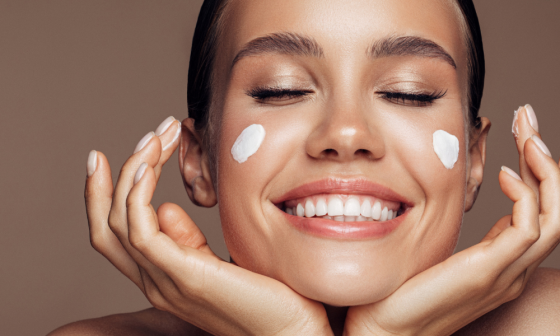Dermaplaning may be the new kid on the block when it comes to facial treatments, but it’s quickly gaining popularity with both aestheticians and their clients. Developed by plastic surgeons to treat delicate facial issues like scarring, wrinkles, and pigmentation problems, dermaplaning has since been adapted by skincare professionals who want to add this one-of-a-kind treatment to their menu of services. But what exactly is dermaplaning? And does it work? Here’s everything you need to know about this innovative treatment option.
The Benefits of a Dermaplaning Facial
Dermaplaning is a form of exfoliation that removes vellus hair (unlike waxing, which removes only its root), embedded bacteria, and other debris from within the hair follicle. The procedure utilizes a blade to gently scrape away layers of dead skin cells and surface debris. In turn, this process allows for the renewal of new skin tissue growth and stimulation of collagen production. Dermaplaning can also treat hyperpigmentation by removing discoloured tissue left behind by acne lesions or scars. It reduces the appearance of wrinkles, as well as lessens the visibility of pores.
While dermaplaning is not typically used for acne treatment, it can be done if needed.
The treatment includes cleansing and prepping skin with steam before shaving off any vellus hair on the face with a special scalpel blade that has been sterilized between uses. Afterward, your aesthetician will apply moisturiser to soothe any inflammation or redness that may have occurred during your appointment.
How Does It Help My Skin?
Dermaplaning is a facial treatment that exfoliates your skin by removing dead, dull skin cells and peach fuzz from your face. The procedure leaves your skin feeling smoother and tighter. It can also help remove blackheads, pimples, and other impurities from your skin’s surface. If you suffer from acne or clogged pores, dermaplaning could be for you. As an added bonus, dermaplaning helps to keep makeup in place for longer periods of time!
Getting Ready for Your Dermaplane
Dermaplaning is a treatment performed by a skin care professional. It removes dead skin cells and leaves you with brighter, fresher skin. Some treatments include an additional component such as microdermabrasion, laser, or LED therapy to boost results.
After your skin is prepped, your provider will use a scalpel to carefully remove surface skin cells. You might experience a little discomfort during and right after your treatment, but it shouldn’t be painful. If you have sensitive skin, speak up so your provider can take extra care.
Tips for Having a Great Experience
1. Give yourself plenty of time to relax, take it easy and the get most out of your experience
2. Make sure you’re up for an invigorating skin experience – In some cases, treatments such as microdermabrasion or peels can leave your skin feeling very raw and irritated if they are not properly managed by the aesthetician.
3. Consider talking with your doctor before getting any beauty procedure done – Treatments that involve lasers require a medical consultation to see if it’s right for you
4. Be open minded about what is done during your treatment
The Next Steps After Your Procedure
You should be able to return to your normal routine after about 24 hours, but keep in mind that your skin may still be sensitive for several days following. Your skin is likely to be dry and irritated in the days following your treatment; this is due to new layers of skin that have not been exposed to environmental factors being removed from its surface. Keep in mind that alcohol may also cause irritation if it is used as a means of taking care of or treating irritated skin because of dermaplaning.






